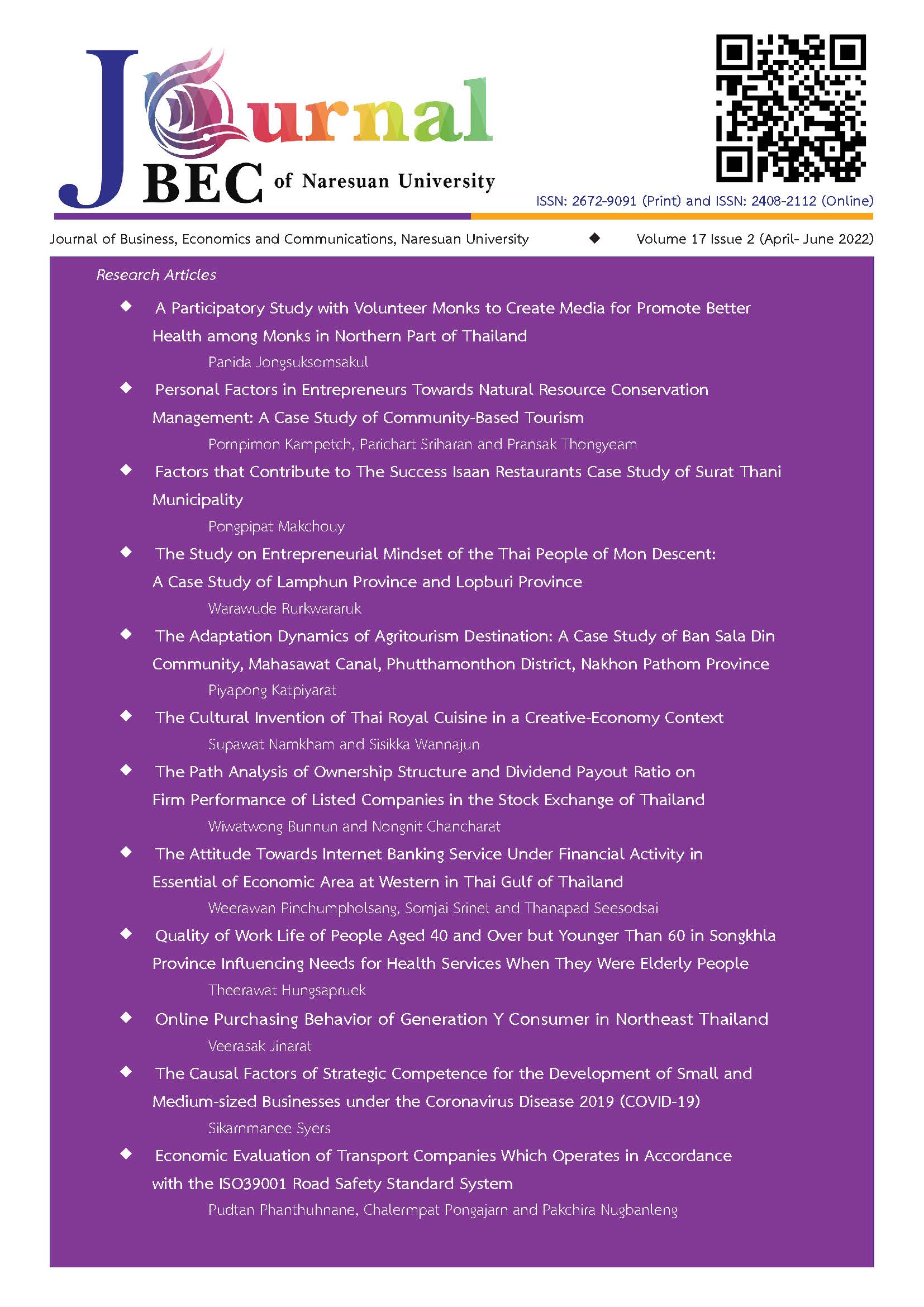The Cultural Invention of Thai Royal Cuisine in a Creative-Economy Context
Main Article Content
บทคัดย่อ
This article focuses on the cultural invention of Thai royal cuisine in a creative-economy context. Employed qualitative research under the inventive and creative-economy conceptual framework. Data collection was conducted by interviewing 37 people via purposive sampling along with data from the documents. Descriptive analysis was carried out to interpret and present the results. The research findings indicate that cultural invention of Thai royal cuisine in a creative-economy context drew on the existing cultural heritage of food wisdom and added value involving selected items. Consequently, certain characteristics of such cooking were adhered to less strictly because of the changing economic and socio-cultural conditions.
Article Details

อนุญาตภายใต้เงื่อนไข Creative Commons Attribution-NonCommercial-NoDerivatives 4.0 International License.
เอกสารอ้างอิง
Adultithipatchara, N. (2014). The success factors and principles of creative-economy influencing the business success of Thai food entrepreneurs in Bangkok. Master thesis, M.A., Kasetsart University, Bangkok.
Arsawai, S. (2011a). Origin and development of royal food before 1932. Arts & Culture Magazine, 32(7), 81-101.
Arsawai, S. (2011b). Origin and development of royal food after 1932. Arts & Culture Magazine, 32(8), 146-169.
Chantavanich, S. (2002). Data analysis in qualitative research (4th ed.). Bangkok: Chulalongkorn University Press.
Chantavanich, S. (2004). Qualitative research (12th ed.). Bangkok: Chulalongkorn University Press.
Eiamprapai, W. (2008). Image of Suan Sunandha: discourses on the Monarchical Institution of Siam. Bangkok: Suan Sunandha Rajabhat University.
Eiamprapai, W. (2010). The traditional culture of the Suan Sunandha palace in the western context of change. Bangkok: Suan Sunandha Rajabhat University.
Kanokpongchai, S., Youngrod, W., Ongvudhivet, T., Udommangala, J. and Sakotwatmakin, P. (2003). Food: the property and fine arts of Thailand (2nd ed.). Bangkok: V. Print.
Kitwikran, N. (2014). The Thai Food Image, the Quality Perceived, and the Tendency to Revisit Thailand. Journal of International and Thai Tourism, 10(1), 12-28.
Najpinij, N. (2011). Constructing “Thainess” within the international food space: Thai Gastronomy at Five-Star hotels in Bangkok. Doctoral Dissertation, Ph.D., Chulalongkorn University, Bangkok.
Nathalang, S. (2016). Creative folklore: synthesis and theories. Bangkok: Princess Maha Chakri Sirindhorn Anthropology Centre (Public Organisation).
Nitiworakarn, S. (2014). Thai food: cultural heritage of the nation. Academic Journal Phranakhon Rajabhat University, 5(1), 171-179.
Office of the National Economic and Social Development Board and Thailand Creative & Design Center. (2009). A report on the creative economy (2nd ed.). Bangkok: B.C. Press.
Panthura, G. (2007). The identity of authentic Thai cuisine: persistence and promotion Bangkok: Suan Sunandha Rajabhat University.
Peesalee, V. (2015). Feudalist female merchants: The adaptation of female royalties after the 1932 political change. Art & Culture Magazine, 36(10), 72-89.
Phuanpoh, Y. (2018). Types of restaurants with characteristics of the successful restaurant entrepreneurs in Phra Nakhon Si Ayutthaya Province. Veridian E-Journal, Silpakorn University (Humanities, Social Sciences and Arts), 11(1), 312-314.
Rojanaphaiboon, T. (2005). Thai Food. In Senanarong, A., Noparatnaraporn, N., Rattananun, S., Rojanaphaiboon, T., Charoenket, S., Limsuwan, T., et al., Operational Manual for the Overseas Thai Restaurant Business: Volume 1, Thai Cooking. Bangkok: Kasetsart University.
Saiwichian, P. (2004). Food, culture, and health. Chiang Mai: Nopburi Printing.
The Office of Industrial Economics. (2012). Final report in the creative industries development (food industry). Bangkok: Licon Company Limited.
Toemphityaphaisit, A. (lecturer). (July 13, 2011). Thailand Focus: Creative Economy. In The Seminar in Administration (pp. 1-48). Nonthaburi: Electricity Generating Authority of Thailand.


